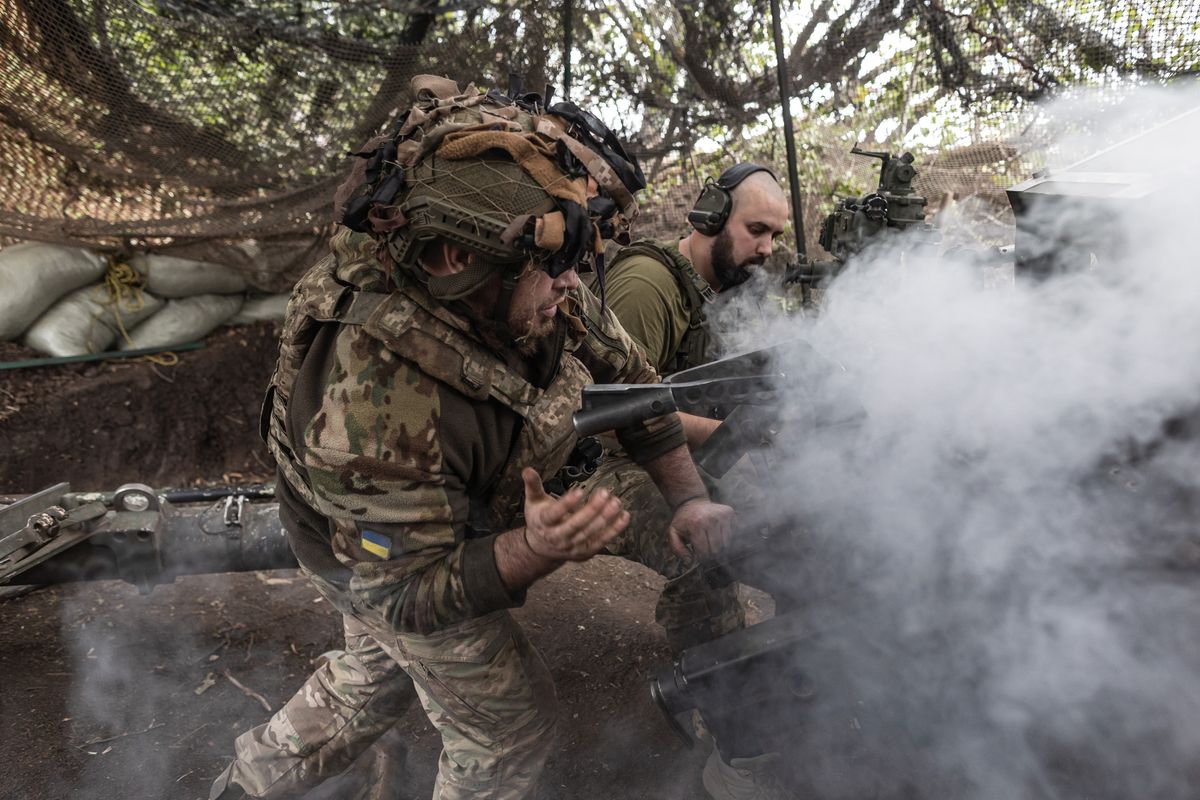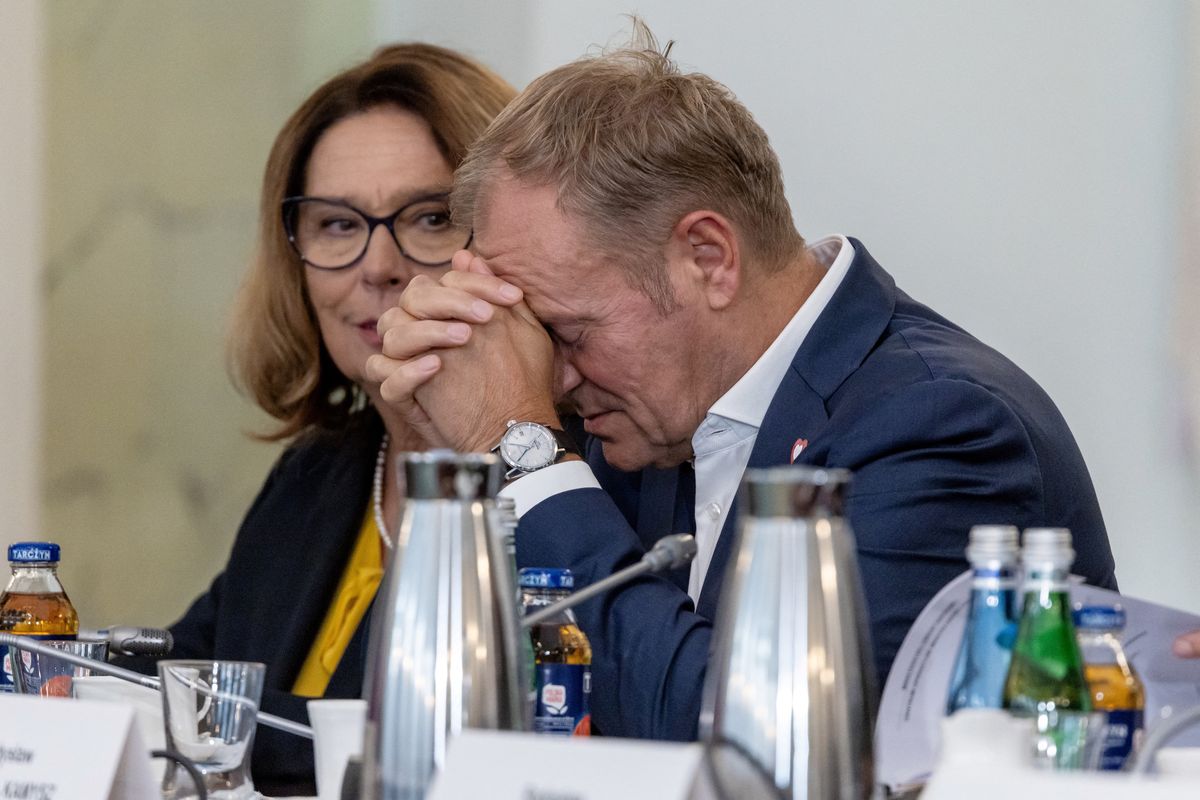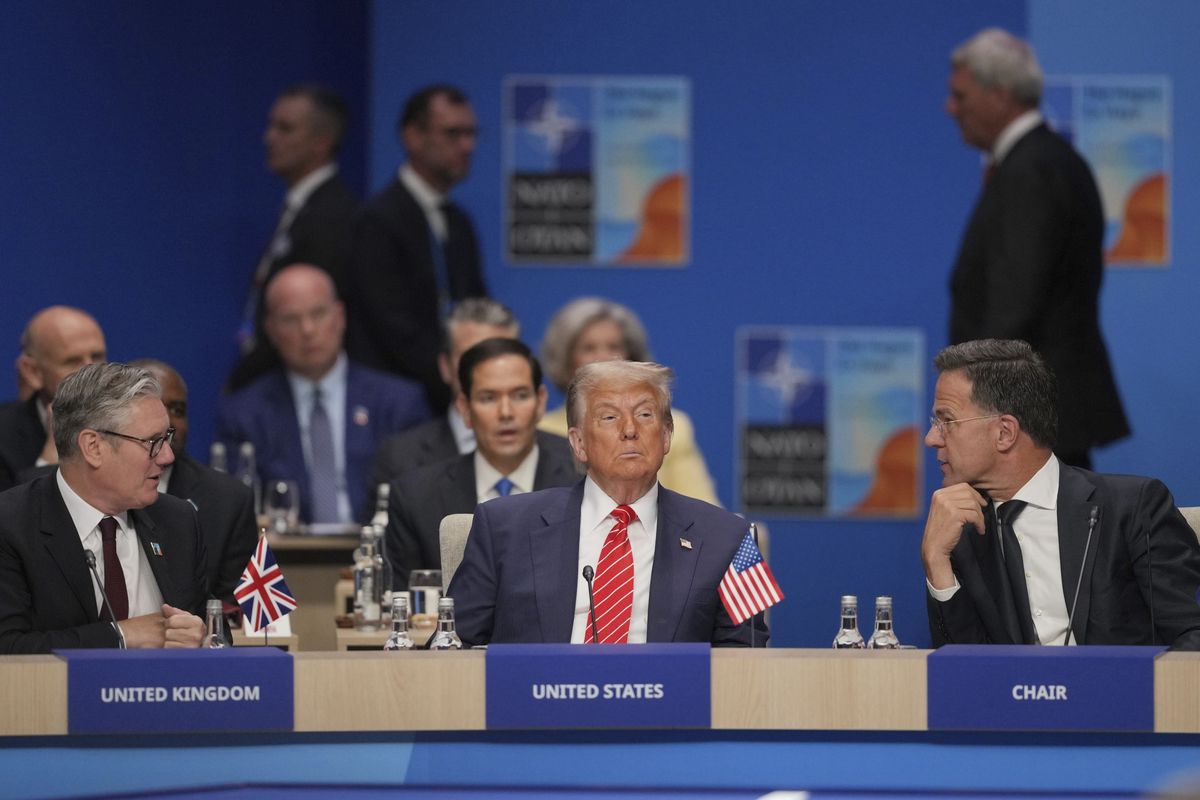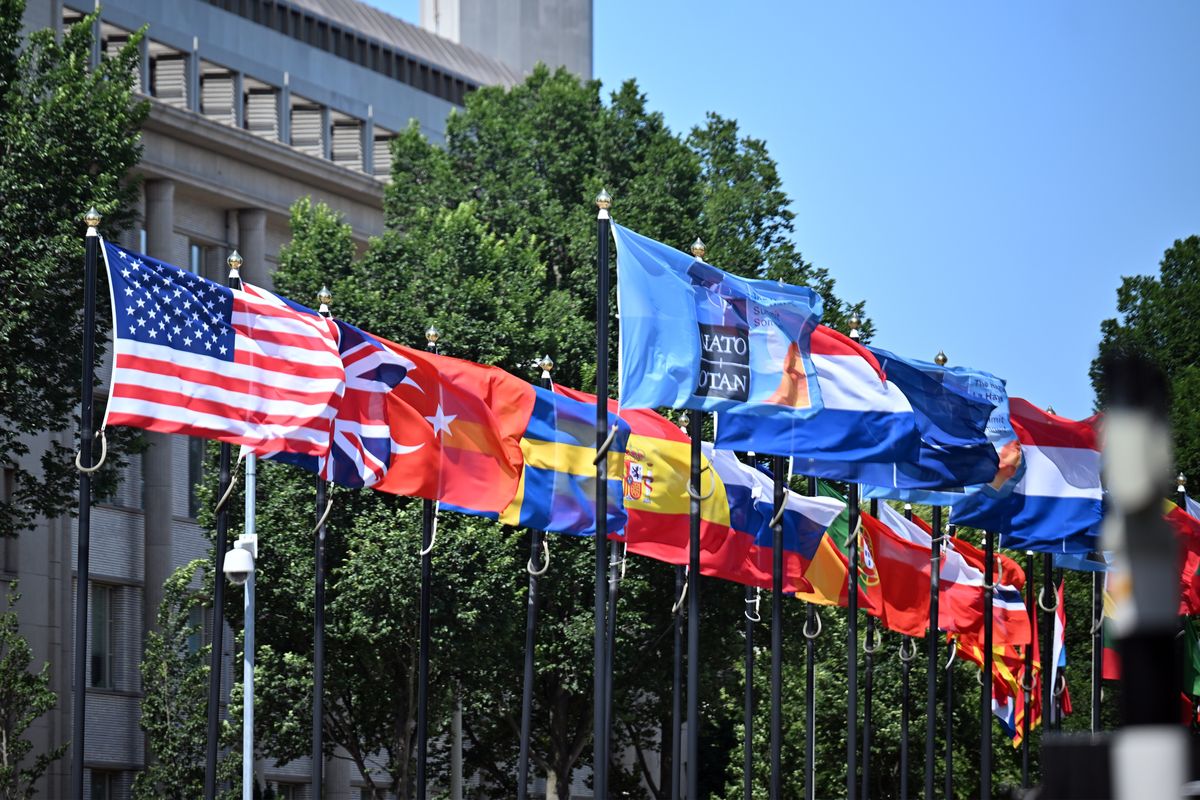The Romanian government has announced it will soon spend two percent of its GDP on defense, a goal set for all NATO members. Last year, NATO allies agreed to enhance defense in Romania and Bulgaria with a tailored forward presence. The Cipher Brief asked Romanian Defense Minister Gabriel-Beniamin Leş what the country’s defense priorities are and how it coordinates with the U.S. on security.
The Cipher Brief: What are Romania’s defense priorities?
Minister Gabriel-Beniamin Leş: We are facing nowadays a more complex international environment defined by important developments that significantly affect regional stability and security. The spectrum of increased challenges, risks, and threats, such as unilateral political and/or militarily aggressive actions in full disrespect for the international law or the expansion of international terrorism and the proliferation of weapons of mass destruction, brought up the need for a new and efficient response, as well as for a comprehensive approach on the national defense strategic objectives.
The National Defense Strategy 2015-2019 defined the necessary national strategic priorities in order to ensure the appropriate security and defense profile for Romania in the years to come. The very base of the national perspective consists of the following: consolidating the national defense capacity; continuing the transformation, modernization and equipment of Romania’s Armed Forces (also by the allocation of two percent of the GDP to the defense budget for at least 10 years); developing the capacities to respond to the asymmetric and hybrid threats; deepening the security dimension of the Strategic Partnership with the U.S. by consolidating military cooperation, including on the national territory and the Black Sea region; increasing the interoperability with the allied and NATO partners’ military forces; and increasing participation in missions and operations in areas of strategic interest for Romania.
From this perspective, it becomes imperative, in the medium term, that the Romanian Armed Forces develop a modern and fully operational force structure, able to properly respond to all kinds of threats, including the unpredictable ones, and to bring a significant contribution to maintaining the effectiveness and credibility of the North-Atlantic alliance, as well as to regional and international security.
The 2015 White Book on Defense goes deeper and defines the priorities and objectives for the defense sector, aiming to uphold the national specific strategic objectives in order to create a modern and robust profile for the Romanian Armed Forces as a credible, predictable, and reliable allied and regional actor. The medium term vision thus includes the development of the defense capabilities; the increase of the strategic credibility at the NATO and EU levels; the strengthening of the strategic partnerships, especially the one with the U.S.; and the development of international defense cooperation.
According to the 2017-2020 Governing Program, the new Romanian Government elected in December last year is maintaining the strategic path and remaining committed to intensifying the efforts in the areas of security and defense in coordination with our allies and partners and is respecting all our international commitments. The main priorities aim to increase the national credibility and regional profile, as well as to provide important contribution to the allied deterrence and defense efforts in the Euro-Atlantic context.
We are focusing in the next period on the swift implementation of the decisions taken last year at the NATO Summit in Warsaw. Thus, the implementation of all components of the forward presence on the Eastern flank of the alliance, including the tailored forward presence in our region, remains a high priority for us. It is in the interest of the entire alliance to ensure and enhance the deterrence and defense allied posture in the Black Sea region and to project stability and provide the needed support to the NATO Eastern partners.
All these objectives and specific defense and security projects imply appropriate resources and budgeting allocations. Being fully aware of this requirement, the Romanian Government reaffirms the commitment to invest in the national defense and security. In this respect, we have ensured two percent of GDP this year for defense, after more than a decade, with the intent to maintain this trend for the following years. The current budgetary allocation ensures predictability for the Armed Forces modernization and the fulfillment of the specific NATO requirement. In this context, I would like to point out that our most important objectives in 2017 and further consist of the procurement and acquisition of new equipment and the modernization of the military infrastructure.
TCB: How is Romania coordinating with NATO on Black Sea defense? Is Romania working again with Russia on this?
GL: Following its 2004 accession to NATO, Romania has constantly tried to raise awareness on the Black Sea’s strategic significance for the entire Euro-Atlantic region. Against this background, the 2014 security developments in Ukraine, Crimea’s annexation, and the militarization of the Black Sea by Russia were main aspects that made our allies become even more aware of the region’s strategic prominence and pushed the alliance to increase military and political measures in order to show the determination towards solidarity with regional states.
Furthermore, the significance of the Black Sea has increased following the Russian military intervention in Syria. As the Russian fleet in Sevastopol ensured the logistical support for expeditionary groups, the Black Sea Region and Eastern Mediterranean have become a common security concern.
This concern became evident during the NATO Wales Summit in 2014, and the Warsaw Summit in 2016, but also on the occasion of the last ministerial meetings in Brussels this February, when the decisions made by the member states strengthened the support for ensuring security and stability of riparian allied members and partners, and indicated that the region is of a strategic importance for Euro-Atlantic security. The security in the Black Sea region is thus of the concern of the entire alliance and not just a regional issue any more.
Therefore, through the tailored Forward Presence initiative – an increase of land, air, and naval – the NATO deterrence presence has been established on the Southern part of the Eastern flank. Strengthening the presence in the Black Sea region represents the alliance’s answer to the increased risks and challenges fuelled by the assertive/aggressive Russia, including the deployment of its sophisticated armament systems in the Black Sea area.
NATO’s naval presence in the Black Sea is one of the major components of the tailored Forward Presence. In this regard, important progress has been made across a broad range of issues on Deterrence and Defense Posture since Warsaw.
New measures were decided recently at the NATO defense ministerial meeting in Brussels on increasing the allied maritime presence in the Black Sea region for enhanced training and exercise activities of NATO naval forces, namely a NATO Combined Maritime Framework and a Regional Maritime Coordination Function. Of course, this allied naval presence will respect international law and specific treaties, especially the Montreux Convention, from 1936, regarding the regime of the Black Sea Straights (Bosporus and Dardanelles).
In order to strengthen the allied response capabilities for counteracting the security threats in the Black Sea region, Romania will continue its efforts to develop the military cooperation with Bulgaria and Turkey and will support the contribution of the partner states – Ukraine, Republic of Moldova, and Georgia – to the military exercises that will be held in the maritime area.
Concerning the land domain, we are making progress in finalizing and refining all necessary arrangements for the operationalization of the Multinational Brigade (MN BDE) on the Romanian territory. The second Infantry “Rovine” Brigade, the best Infantry Brigade in the Romanian Armed Forces, which will serve as a framework for the MN BDE, is expected to reach the Initial Operational Capability (IOC) in April 2017 and the Final Operational Capability (FOC) in November 2018. Eight allied countries have already announced contributions to this Brigade, while others are still assessing it. We are confident that concrete results in this regard will be soon achieved.
Moreover, the presence of the two units, part of the NATO Force Structure, the NATO Force Integration Unit (NFIU) and the Multinational Division South-East Headquarters (HQ MND-SE), represents a great strategic step NATO has taken as part of its adaptation to the current strategic environment.
The longer term adaptation measures are more complex and interconnected, with the results of NATO’s capacity to respond and to reinforce, a more ambitious exercise program, enhanced advance planning, an enabled accelerated decision-making process and the ability to counter hybrid warfare, and so on.
Regarding relations with Russia, Romania advocates for a pragmatic approach to bilateral relations and believes that a constructive dialogue should be established with respect to each country’s national interests and strategic orientation.
Regarding the regional cooperation formats that Russia is part of, due to Moscow’s attitude toward the crisis in Ukraine, especially but not limited to the illegal annexation of Crimea, all activities under the BLACKSEAFOR initiative are de facto suspended, and any reinstatement to their former status is contingent upon the resolution of the current crisis.
However, the regional cooperation with Russia continues to be in place under the aegis of other instruments, such as Confidence and Security Building Measures in the naval field in the Black Sea initiative and the Black Sea Economic Cooperation Organization (BSEC).
TCB: NATO is sending an increased Air Force presence into Romania. Is this solely to act as a deterrent mechanism vis-à-vis Russia? Is so, is this sufficient to deter any potential Russian aggression? What more – if anything – would Romania like to see NATO doing in terms of defending the southeastern flank?
GL: Enhancing Air Policing falls within the remits of Readiness Action Plan, and as a consequence, more allies decided to contribute to this mission, for the southeastern flank. The United Kingdom is just one of them, and more allies have already expressed commitments to send air defense capabilities this year and next year as well, in order to participate in the air policing missions and related training, thus mitigating the shortfalls in the region.
As part of the national effort to modernize the defense infrastructure, as well as to facilitate the allied support and contribution, the Romanian bases have been updated, and the allied troops will be more than welcome in our area for training and exercises. Our first ever F-16 squadron and their pilots are ready for instruction activities in a multinational environment.
We have witnessed a constant and significant downgrade of the security environment throughout the Eastern flank of NATO over the last three years. We notice an intense Russian military build-up in the Black Sea area, with the modernization of its Black Sea Fleet and reinforcing the anti-access/area denial (A2/AD) capabilities in Crimea.
The militarization process in the North of the Black Sea is being carried out in parallel with Russia’s attempts to re-establish its political and strategic influence in the countries that surround the Eastern flank of the alliance (Ukraine, Republic of Moldova, Georgia). From this point of view, reigniting the frozen conflicts from the states within this region may be at any time an instrument for the further destabilization, if it is in the Kremlin’s interest. Nevertheless, most likely, the main instrument that Russia will further use to test NATO’s solidarity, cohesion, and response capabilities will remain Informational Warfare.
From this perspective, in order to bring additional needed substance to the collective defense efforts in the region, we could consider options to increase air defense capabilities, to develop or dispatch dedicated capabilities to cancel the Russian A2/AD planning and strategy in the Black Sea, and to promote and continue to develop a quick and articulated capacity to respond to Russian propaganda in the region.
However, only allied solidarity and cohesion, in practical and concrete terms, together with the framework for credible and enhanced collective defense and deterrence, will certainly discourage any potential threats or even aggression against the security and stability of the alliance and its member states.
TCB: What new bilateral defense cooperation arrangements are Romania involved in? For example, with the UK sending Typhoon fighter jets to Romania, is there any bilateral cooperation like this with the United States?
GL: Romania has always expressed an important attention to the strengthening of the bilateral cooperation with its allies and European partners. In fact, as I already mentioned, the strengthening of the strategic partnership is one of the national defense and security priorities. In this line, we highly appreciate the UK’s commitment to the security in the region by sending this year the “Eurofighter Typhoon” squadron at Mihail Kogălniceanu Airbase, to participate in air policing missions and related training activities. I would also like to mention here the other UK contribution to the allied efforts to enhance deterrence and defense along the NATO Eastern flank, including in the Black Sea maritime domain.
Allow me to emphasize also the important role our Strategic Partnership with the United States is playing in the present complex and extremely challenging security environment and to underline that our military relation with the U.S. Armed Forces represents an important pillar of both our national security and bilateral strategic cooperation.
The U.S. has extended invaluable support to us, both bilaterally and within the NATO framework, and we deeply value the solid presence of the American troops in this region and on our national territory, which is undoubtedly a clear sign of its commitment to European security. For Romania, it’s very important to continue the extended participation in bilateral and multinational exercises, covering all three dimensions – land, air, and maritime.
For our part, we are determined to upgrade our cooperation connected to the Mihail Kogălniceanu Airbase, used as a hub for transit of troops and equipment to and from Afghanistan.
We are committed to continue to be an active partner in international issues of interest for the U.S., including through important contributions to operations and missions (such as our presence in Afghanistan, fighting terrorism and combating Daesh).
A distinct element of our partnership is the U.S. Operation Atlantic Resolve (OAR), as part of the European Reassurance Initiative (ERI). Most of these exercises are planned taking into account the opportunities offered by a continuous U.S. presence in the region through this operation, Black Sea Rotational Force, and the naval exercises in the Black Sea.
Moreover, I would like to note the excellent cooperation that we have with all the allies and partners that participate with Land, Air, and/or Naval Forces to multinational exercises conducted in Romania. Their presence here sends out a strong message regarding allied solidarity and will further improve the level of interoperability between our Armed Forces. We are looking forward to increase the interoperability at the tactical level between the Armed Forces of the U.S., allies, and also partners.
TCB: How does Romania coordinate with Bulgaria on defense and security?
GL: As both allied and EU countries, we have fruitful and solid defense cooperation with our southern neighbor, and it is in our intention to reinforce and substantiate the bilateral relation, aimed at strengthening the security of our region. In terms of defense, we have common interests in the security and stability of the Black Sea region, thus close coordination with our neighbors and riparian allies is extremely important. We are doing our best to improve this dimension in order to rapidly and efficiently deter the threats and challenges coming against this part of the alliance.
The main project of bilateral cooperation in defense is related to the swift implementation of the allied decisions related to all components of the tailored forward presence in our region. We highly value Bulgaria’s participation in multinational exercise training activities held by Romania, as well as its contribution to the NATO command and control structures on the Romanian territory, the NATO Force Integration Unit (NFIU) and the Multinational Division South-East Headquarters (HQ MND-SE).
There are already ongoing exercises and practical common training between our forces, in allied and multinational formats, which we intend to amplify. On the other side, we are working together and have regular consultations on different allied and multilateral initiatives and important issues related to the security of the Black Sea and South Eastern Europe.
Moreover, both Romania and Bulgaria believe that the South-Eastern Europe Defense Ministerial (SEDM) Initiative continues to play a key role in fostering peace and stability in the region, and we are determined to further develop the breadth of our dialogue on issues concerning regional security.












